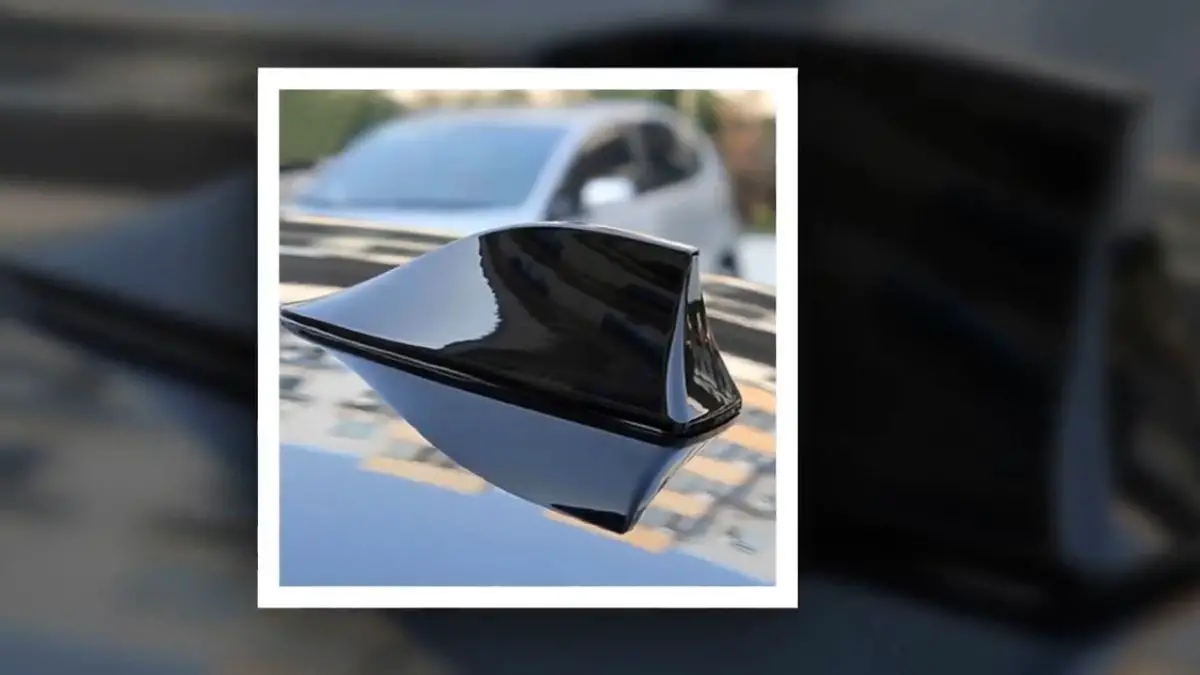Do you drive with the antenna of your car exposed? If so, you might want to take note of this Shark Fin Antenna review before you get caught in the rain again.
While it might be easy to assume that antennas are impervious to water, that’s not actually the case at all. In fact, if you leave your antenna exposed when it rains and don’t have it thoroughly dried off afterward, you could end up causing permanent damage.
Let’s talk about why this matters, how water can damage your car antenna and how you can avoid this issue with the Shark Fin Antenna.
Table of Contents
Waterproof or water-resistant car antennas
Although car antennas can get wet, they should not be exposed to direct rain or strong downpours. Over time, exposure to water will corrode an antenna’s metallic parts and eventually render it useless—if a weather-beaten antenna was still able to receive signals at all. However, there are ways to protect your antenna from moisture.
To protect your antenna from moisture, invest in a waterproof or water-resistant car antenna. Designed to withstand extreme conditions like rain and snow, waterproof antennas are particularly useful for drivers living in areas with unpredictable weather.
Protecting your car antenna from rain and snow
At first glance, car antennas may look like they’re made to withstand all kinds of weather, but in reality, they’re not. On most vehicles (particularly new ones), you can see that there is a shark fin antenna on top of your vehicle. But did you know that if exposed to rain or snow for too long, it could become damaged?
The question we should be asking ourselves is whether or not our antenna will stand up to rainy and snowy conditions over time. To answer that question, let’s take a closer look at how car antennas work and what parts are used in making them. This way, you’ll know if you need to put on some sort of protection for your car’s radio or if it’s fine as is.
Since they’re often exposed to rain and snow during long road trips (which are also known for causing static noise), you want to make sure that your antenna won’t crack easily after years of exposure. Or, even worse, if rain drips inside of your car due to being exposed too much. With all of these things in mind, let’s go over some tips on how to protect your car radio from weather elements.
How do you keep an antenna from getting wet in rainy or snowy conditions? It’s not that hard to prevent water and moisture damage to your radio.
If your car starts picking up static and other types of interference while driving, that could be a good sign that water has gotten into your car’s antenna. Before hitting a particularly long stretch of road with lots of rain or snow, cover your antenna using tape or a waterproof cover.
Is shark fin antenna waterproof without cover?
Just because your car’s antenna is protected by a shark fin design doesn’t mean that it won’t be damaged by water. This would also require for you to cover up your antenna if you are afraid of it getting wet, but is shark fin antenna waterproof without cover?
In short, no, a shark fin design does not make your car safe from water damage. However, what a car shark fin antenna does do is give you better reception and a cleaner aesthetic look on your vehicle.
Why do cars have shark fin antennas?
Most car owners probably wonder why their vehicle has a shark fin antenna? In fact, it’s actually used to pick up signals like cellular data, GPS, Wifi, and satellite radio.
Is Shark Fin antenna better for car?
Yes, shark fin car antennae are better for your car and are better than whip antennas in several aspects:
- Efficiency– This is the ratio of power actually radiated by an antenna to the electrical power it receives from a transmitter
- Directivity– Antenna directivity is the ratio of maximum radiation intensity (power per unit surface) radiated by the antenna in the maximum direction divided by the intensity radiated by a hypothetical isotropic antenna radiating the same total power as that antenna.
- Signal sensitivity – This is the minimum magnitude of input signal required to produce a specified output signal having a specified signal-to-noise ratio.
- RF antenna interference– By definition, interference originates from a source external to a signal path and produces undesired artifacts in the signal.


